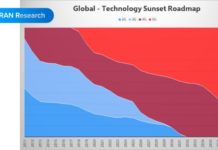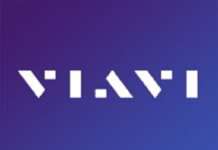
The journey to 5G continues to live up to its name with a myriad of challenges emerging along the way. While these next-gen networks are yet to enchant mass audiences or sufficiently impress early adopters, we are seeing more examples where promises are finally beginning to be realized.
We are still very much at the beginning of this journey. We’re seeking to move on from a 4G world while considerable LTE demands persist. We’re laying the groundwork for future services capabilities before demand and business models have been fully-realized. Various industries are developing complex use cases that capitalize on next-gen connectivity. Eventually, all these initiatives begin to impact each other and the full picture tells us that the 5G journey is multifaceted and multidimensional. It will require patience and perseverance. Above all, it will demand persistence and commitment. Today, our belief in 5G’s promise and the ability to realize it has never been greater.
In many ways, the pandemic accelerated trends we hadn’t anticipated gaining steam for at least another couple of years – whether fixed wireless access driven by working from home or automation. Notably, private industry is eager to carve out a piece of its own 5G spectrum, with national regulators beginning to dedicate spectrum exclusively for this purpose. 4G LTE will remain mainstream for private networks in 2021, but enhanced trials of 5G and early adoption by leading innovators is anticipated, with mmWave tech in APAC likely to see commercial deployments in late 2021. This provides a glimpse of 5G’s expanded potential, as enterprise adoption drives new revenue opportunities.
O-RAN -Tip of the Open Networking Iceberg
Open RAN shows potential to become telecom’s low-cost, vendor-neutral future. Moves to open 5G architectures won’t just transform core network functions and APIs: new standards such as Open RAN are poised to further virtualize and commoditize 5G radio functions, beginning with fronthaul.
Open RAN initiatives continue to gain steam among vendors and operators alike. Sizable orders are being placed and newsworthy commitments made, with multi-vendor environments poised to occupy an outsized role in 5G footprints of the future. Array of network configurations will require intense, rapid, end-to-end and nodal testing, both before launch and proactively in the live network.
5G Telco Cloud
Mobile core cloud, network edge cloud and virtual RAN cloud represent the three major domains telcos will pursue on their quest for a winning cloud strategy. The overwhelming scalability, flexibility and cost-efficiency benefits of 5G cloud are just too great to risk by not getting it right at the start, while time is of the essence, with competition looming from all quarters. It is important that telecom operators establish an efficient and cost-effective path from today’s vertical architecture to a horizontal strategy, which leverages a transparent multi-cloud infrastructure, to exploit the greatest benefits for all three domains.
5G Core Testing
Telecom operators and Network equipment manufacturers are accelerating 5G SA timetables and it is crucial for telecom operators to expedite realistic system testing, emulating real world conditions. Operators are seeking help in navigating the complexity from lab testing to successful deployment and operationalization. These services-based engagements and the use of automation environments are redefining the way we work. Testing is moving to near real time, which is an unprecedented development. In 2021 we will see more automated lab-to-live testing, which takes lab testing capabilities into live runtime environments, to support this paradigm shift.
We anticipate significant testing activities driven by the move of 5G SA from the lab to the field. It will require a wealth of testing and monitoring, including for the cloud-based core, latency testing for every hop in the network, basic endpoint connectivity validation, as well as speed tests. Performance testing will follow to assess the ability to scale.
Challenges
With the most dramatic technology disruptions happening, along with diverseness and complexity of next generation networks the industry continues to determine, how the network is managed and delivered. This experience poses several challenges for the network engineers and technicians to test and validate next generation networks of tomorrow. Network technicians need to test new network functions, monitor, measure & validate networks and deploy services with confidence – from traditional performance testing to the rigorous analysis of virtualization, cloud computing, mobile backhaul, security and high speed ethernet.
Best Practices to Safely Accelerate 5G
The world is safely accelerating the journey of 5G as it is dynamic, near-real-time and high-performance, introducing fundamental changes in how testing, validation, assurance and security must be addressed. The key takeaways:
- Emulate real-world networks, radio environments and user activity to comprehensively validate 5G performance and user experience prior to launch and continuously thereafter.
- Automate collaborative development across service provider and vendor teams for faster network releases and automate root cause analysis of performance issues for faster problem resolution and better user experience.
- Proactively and continuously assess the security of networks and supply chains to discover and mitigate vulnerabilities.


















